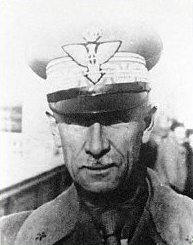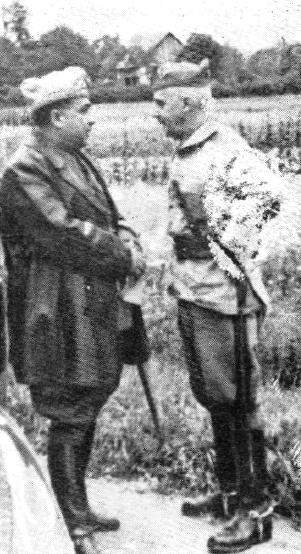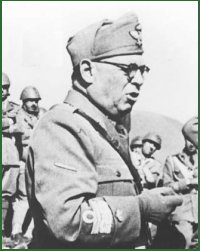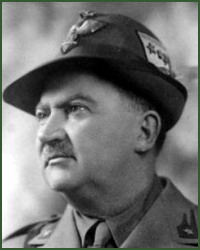Related Research Articles

The Independent State of Croatia was a World War II–era puppet state of Nazi Germany and Fascist Italy. It was established in parts of occupied Yugoslavia on 10 April 1941, after the invasion by the Axis powers. Its territory consisted mostly of modern-day Croatia and Bosnia and Herzegovina, as well as some parts of modern-day Serbia and Slovenia, but also excluded many Croat-populated areas in Dalmatia, Istria, and Međimurje regions.

Italian war crimes have mainly been associated with the Kingdom of Italy, Fascist Italy and the Italian Social Republic starting from the Italo-Turkish War then to Pacification of Libya, the Second Italo-Ethiopian War, the Spanish Civil War, and World War II.

The Italian governorate of Montenegro existed from October 1941 to September 1943 as an occupied territory under military government of Fascist Italy during World War II. Although the Italians had intended to establish a quasi-independent Montenegrin kingdom, these plans were permanently shelved after a popular uprising in July 1941. Following the Italian surrender in September 1943, the territory of Montenegro was occupied by German forces which withdrew in December 1944.
The 2nd Army was a World War I and World War II field army of the Royal Italian Army.

The Anti-Communist Volunteer Militia were paramilitary auxiliary formations of the Royal Italian Army composed of Yugoslav anti-Partisan groups in the Italian-annexed and occupied portions of the Kingdom of Yugoslavia during the Second World War.

The 31st Infantry Division was a German infantry division of the Army during World War II. It participated in the invasion of Poland in 1939 then the invasion of France and the Low Countries in 1940. As part of Panzergruppe 2. of Army Group Centre, it was involved in the invasion of the Soviet Union in June 1941. After hard fighting throughout 1941 and 1942 it joined the 9th Army and fought in the Battle of Kursk in July and August 1943. Along with the rest of the 9th Army, the division conducted a fighting withdrawal for the remainder of 1943, during which it sustained heavy casualties. In the early stages of the Soviet Operation Bagration of June to August 1944, the 31st Infantry Division was destroyed, a fate which subsequently befell most of Army Group Centre. The division was officially disbanded on 18 July 1944.
The Fast Army Corps or Cavalry Army Corps was a Royal Italian Army army corps during World War II that participated in the invasion of Yugoslavia.
The XI Army Corps was a corps of the Royal Italian Army during World War II that participated in the invasion of Yugoslavia.
The Motorized Corps was a corps of the Royal Italian Army during World War II which existed between June 1939 and May 1942.
The XIV Corps was a corps of the Royal Italian Army during World War II that participated in the invasion of Yugoslavia.
The XVII Army Corps was an army corps of the Royal Italian Army during World War II.

Federico Ferrari Orsi was a general in the Royal Italian Army during World War II.
Riccardo Balocco was a general in the Royal Italian Army that commanded the V Corps during the World War II Axis invasion of Yugoslavia in April 1941.

Mario Robotti was a general in the Royal Italian Army who commanded the XI Corps during the World War II Axis invasion of Yugoslavia in April 1941.

Francesco Zingales (1884-1959) was a general in the Royal Italian Army during World War II.
Giovanni Vecchi was a general in the Royal Italian Army who commanded the XIV Corps during the World War II Axis invasion of Yugoslavia in April 1941.
Giuseppe Pafundi was a general in the Royal Italian Army who commanded the XVII Corps during the World War II Axis invasion of Yugoslavia in April 1941.

Gabriele Nasci was a general of the Alpine Corps in the Royal Italian Army.
The Army of the Po, numbered the Sixth Army, was a field army of the Royal Italian Army during World War II (1939–45).
The XVIII Army Corps was a corps of the Royal Italian Army during World War II.
References
- Nafziger, George (1997). "Italian 2nd & 9th Army – Invasion of Yugoslavia – 5 April 1941" (PDF). Combined Arms Research Library Digital Library. Archived from the original (PDF) on 22 March 2014. Retrieved 20 July 2013.